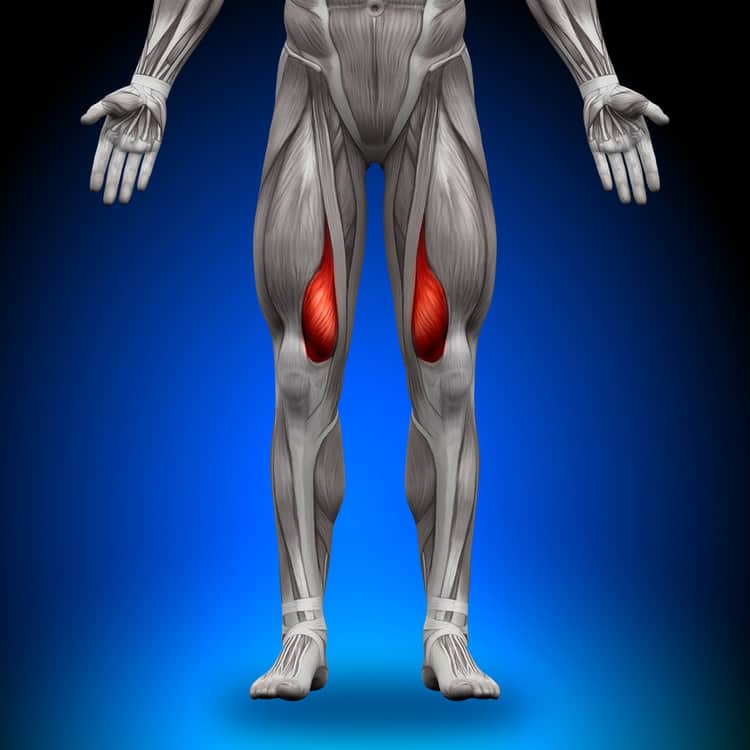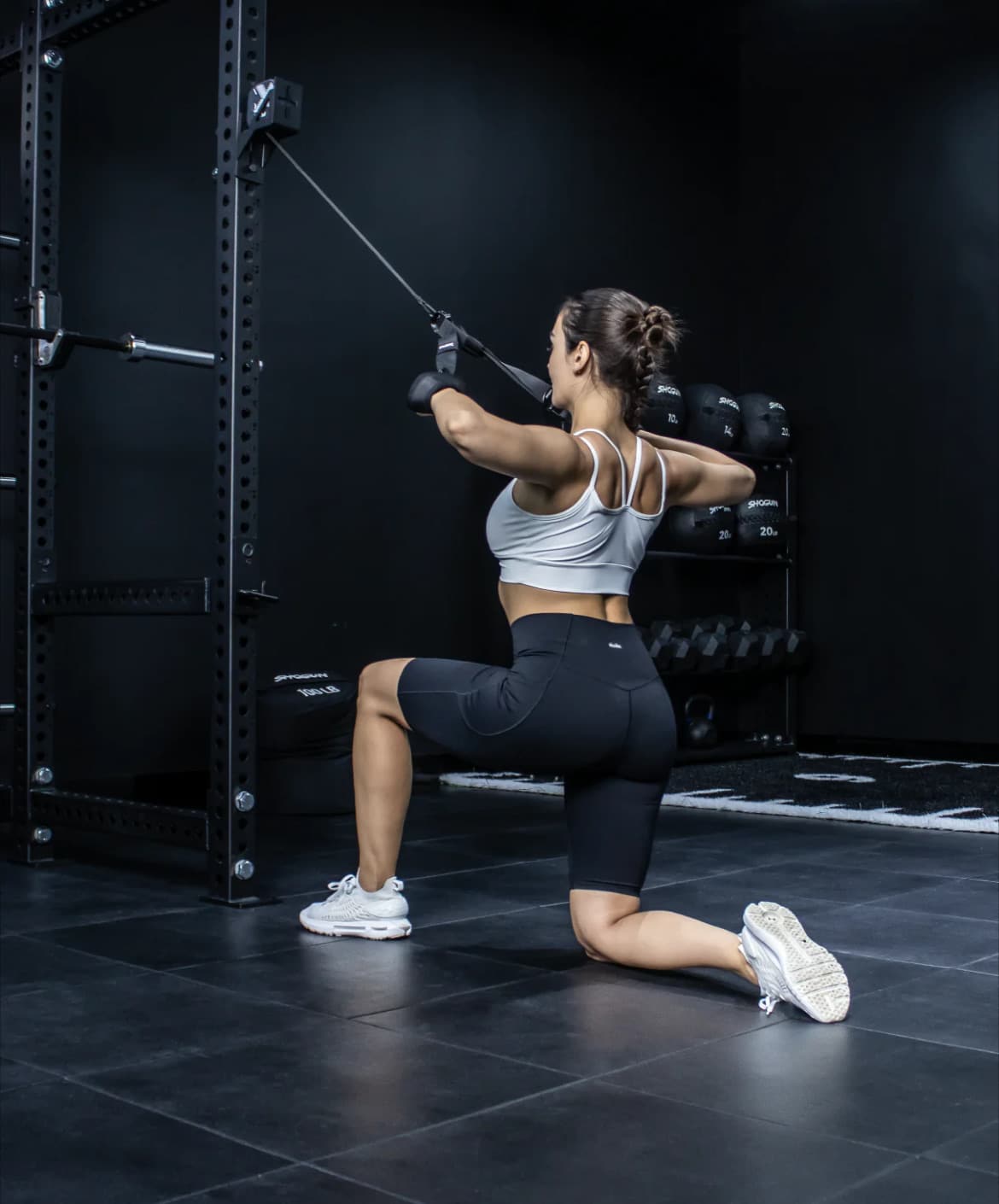Discovered by Ben Patrick (Knees Over Toes Guy) himself, the Patrick Step has become one of the most important foundational movements of the ATG training methodology.
Sometimes referred to as Patrick step ups/step downs, this movement is designed to help our knees become comfortable when extended out past the toes.
This movement has single handedly saved my knees from surgery and is unquestionably one of my all-time favorite knees over toes exercises.
Today we’re going to take a closer look at the Patrick step, why it’s really important for your knee health, and we’ll also run through exactly how to perform the movement correctly.
Let’s begin!
How To Perform The Patrick Step
Start the Patrick step by bending at the knee so that your working leg’s knee tracks out and over your toes, while keeping your heel flat on the ground.
Reach out in front of you with your non-working leg and gently touch the ground with your heel.
Your focus is simply to get that knee out as far past your toes as you can while keeping your foot flat on the ground.
Patrick Step Pointers
- Try to keep your non-working leg’s ankle dorsiflexed throughout the movement.
- Don’t push off the ground with your non-working leg – it should just be a soft pause.
- Maintain tension in the VMO throughout the entire movement.
- Start on your non-dominant side.
- Don’t work through pain.
- According to Patrick, the end goal here is to “go until your ankle cannot bend anymore, without letting your inside heel touch the floor, thus requiring your knee to support your full weight”.https://www.amazon.com/Knee-Ability-Zero-Ben-Patrick/dp/B09KNGDYGL?tag=a1athlete0b-20&ref_=as_li_ss_tl
- To get the most out of your Patrick steps, you’ll need to be working on your ankle mobility as well, so remember to stretch your calves out plenty!
Patrick Step Benefits
This seemingly quite simple movement has some pretty profound benefits…
Massive Carryover To Sports-Specific Movements
Whether you’re a basketballer, volleyballer, sprinter, football player, dancer, or virtually any kind of athlete, you’re probably encountering this ‘knee over toe’ position regularly.

Whenever you jump, land, or sprint, your knee is out past your toes.
If you want to become stronger, more efficient, and more explosive on the court or field, you need to strengthen the knee in this position.
Prevents ACL Injuries
If the knee can’t safely travel forward, it will travel inwards.
So when you land from a jump, for instance, if your knee can’t absorb the landing forces by moving forward (past the toes), it’ll internally rotate, which is the major cause of ACL injuries.
So one of the major benefits of the Patrick step is that you’re going to become so strong in that knees over toes position that you’ll almost certainly not be at risk of blowing out your ACL!
Patrick Step Progressions
Let’s run through each of the different variations of the Patrick step you can work your way through…
1. Patrick Step On Ground
The simplest regression is to start on the ground.
Remember your objective is to get that knee out as far past the toes as possible while keeping your heel on the ground.
You might want to start with just a relatively small knee bend until you get comfortable in this position.
Then you can progress to more extreme ranges of motion (bottom right).

Once that becomes relatively easy, it’s time to take things up a notch… literally!
2. Elevated Patrick Step
The next Patrick step progression is to use an elevated platform such as a low plyo box or a couple weight plates.
I’m using my VMO Pro in the following demonstration, an adjustable slant board designed specifically for Patrick/Poliquin step ups!
The elevated surface will increase the range of motion and difficulty a fair bit.
If you’re struggling with these, remember the cue of shooting your hips forward which I’ve found helps when you’re on the elevated surface.
.
Check out my full review of the VMO Pro, the best slant board for ATG movements like the Patrick step!
3. Elevated & Loaded Patrick Step
Once you’ve got the hang of that, you can start loading up.
I personally just use kettlebells or dumbbells, but you can work your way up to some serious weight!
At this level, you’ll need extremely good balance and ankle mobility, as well as VMO strength!
Patrick Step – Sets & Reps
If you’re just starting out with the Patrick step, the ATG standard for this movement is 25 consecutive reps to full ankle bend (on flat ground).
If you’re doing elevated/loaded Patrick steps, you’ll probably be fine sticking to anywhere between 15-30 reps for 2-4 sets.
Patrick Step: Muscles Worked
When you start doing Patrick steps, it’ll become abundantly clear which muscle is at work here…
Of course it’s the VMO, or the teardrop muscle of your inner quad.

The Patrick step, if done correctly, will work the VMO almost exclusively.
Most people will feel a deep burn in their VMO after just 10-20 reps with no added weight.
While your calves and Achilles are doing a bit of work to help stabilize the lower leg during this movement, you’re really only going to feel your VMO working during the Patrick step.
Patrick Step Alternatives
The Patrick step has a couple kissing cousins which are extremely similar in nature and are also worth experimenting with.
Poliquin Step Up
The difference between a Patrick step and a Poliquin step up is that the heel is elevated on an incline (as opposed to being flat).
The Poliquin step up was designed as a progression to the godfather of all reverse step ups, the Petersen step up (which we’ll get to shortly).
By elevating the heel, it makes it easier to reach the floor with your non-working leg’s foot.
Petersen Step Up
The toughest progression of all the reverse step ups is the Petersen step up, which is extremely similar to the Poliquin step up, only you’re standing on a flat surface and rocking up onto the balls of your feet.
To be clear, the objective here is to rise up onto the balls of your feet.
I’ve found I get a significantly deeper stretch through the VMO doing this particular variation and the burn is absolutely wicked!
What’s The Verdict?
The Patrick step is an absolutely essential, foundational movement for anyone looking to bulletproof their knees.
This exercise should be mandatory for basketball players, volleyball players, sprinters, football/soccer players, and virtually any kind of athlete you can think of!
The idea is to become really strong in that ‘knee past toe’ position, and the Patrick step is the absolute best place to start.























